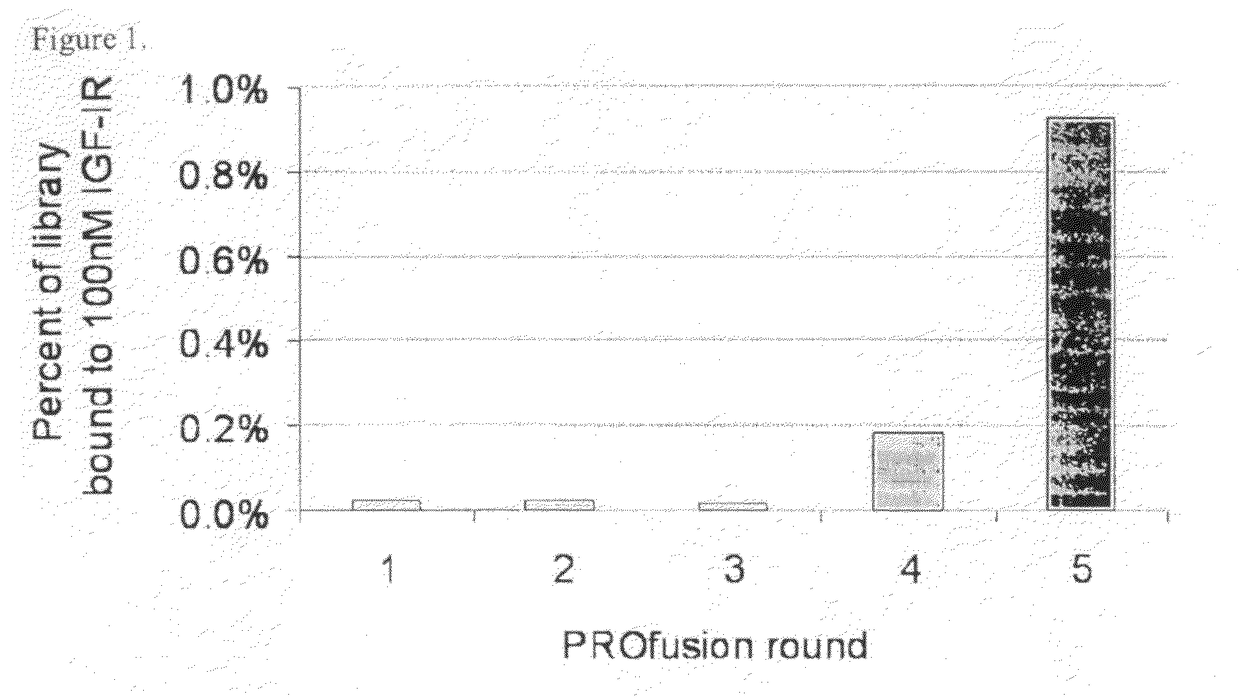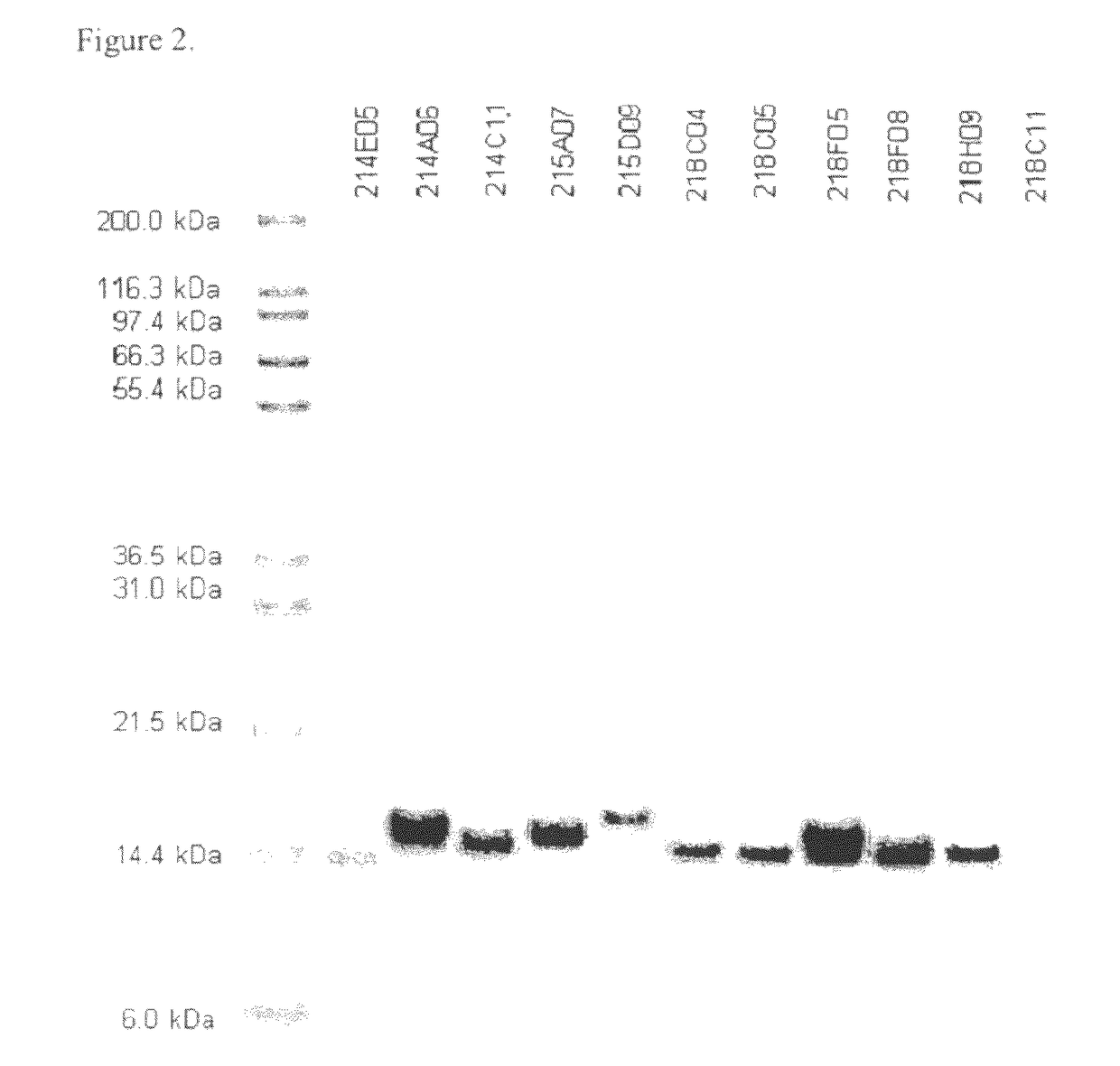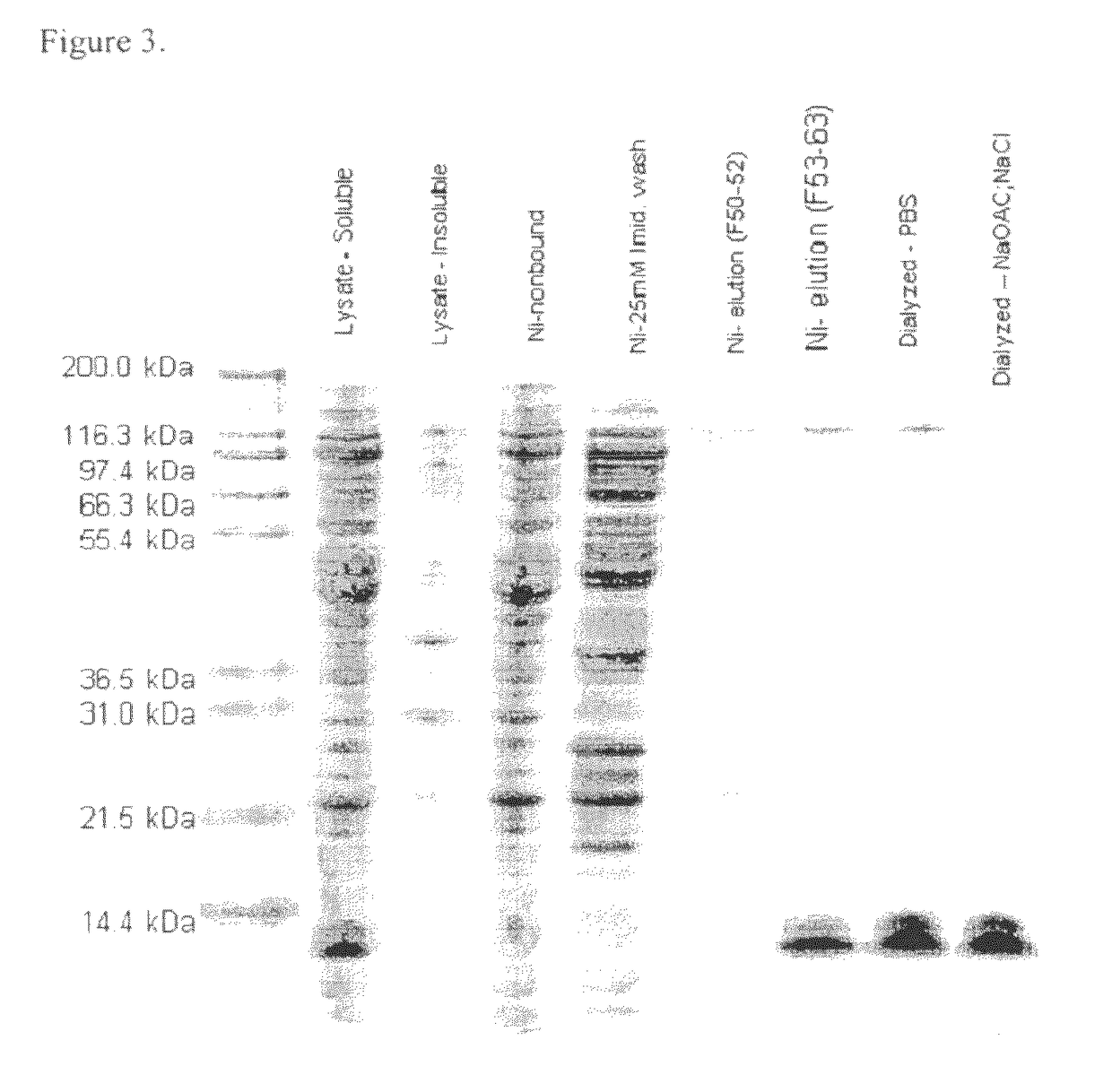Targeted therapeutics based on engineered proteins for tyrosine kinases receptors, including IGF-IR
a technology of tyrosine kinases and engineered proteins, which is applied in the direction of fusion polypeptides, peptide/protein ingredients, unknown materials, etc., can solve the problems of slow attempts to make antagonists or other types of inhibitors, inability to make selective antagonists, and difficulty in making therapeutics, so as to improve the improve the effect of delivery or therapeutic properties, and improve the effect of production efficiency
- Summary
- Abstract
- Description
- Claims
- Application Information
AI Technical Summary
Benefits of technology
Problems solved by technology
Method used
Image
Examples
example 1
Initial Identification of IGF-IR Binding Molecules
[0280]A library of approximately 1013 RNA-protein fusion variants was constructed based on the scaffold of the tenth type 3 domain of human fibronectin with three randomized regions at positions 23-29, 52-55 and 77-86 (amino acid nos. are referenced to SEQ ID NO:1) (three loop library; Xu et al, Chemistry & Biology 9:933-942, 2002). After conversion to mRNA / cDNA heteroduplexes, the library of a trillion mRNA / cDNA-protein fusions was bound to 100 nM biotinylated IGF-IR in solution, and captured on streptavidin-coated magnetic beads. The cDNA was eluted, amplified by PCR, and used to generate a new library of mRNA / cDNA-protein fusions. Five rounds of selection were carried out in this manner and the percentage of library binding to IGF-IR was monitored by quantitative PCR after every round to identify target binding enrichment (FIG. 1).
example 2
Identification of Competitive IGF-IR Clones
[0281]Proteins encoded by independent clones were analyzed for inhibition of target binding in the presence of IGF-IR using a competitive binding assay. Over one hundred-clones were identified that inhibited the binding of IGF-I to IGF-IR, suggesting that these clones bound IGF-IR at or near the natural ligand (IGF-I) binding site. The SEQ ID NOs (see FIG. 30) of these one hundred clones and their percent inhibition in the competitive binding assay are presented in Table 1.
[0282]
TABLE 1SEQ ID NOs of IGF-IR Competitive Clones and % InhibitionCloneSEQ ID NO:% inhibition223B02289.1%223A04387.0%223F03486.8%214D04586.5%225E09684.6%224A02784.6%223A07883.8%223E11982.2%223H041082.2%215G061180.5%219F081280.0%223B011379.7%225B011479.4%214C111578.9%219C071678.8%218C041777.0%215A071876.1%223D011976.0%225D032074.8%225A022174.6%223A102273.7%225B032373.7%218C052473.6%225A052572.1%224A012672.0%214F032772.0%214A082870.6%223H112970.5%218B033070.4%215E093170....
example 3
Examination of the Electrophoretic Properties of IGF-IR Competitive Clones
[0283]The purity and electrophoretic properties of selected clones were examined by SDS-PAGE (FIG. 2). These were found to be reasonably pure considering their single-column purification and had apparent molecular weights consistent with their theoretical masses (taking into account the additional mass associated with C-terminal tags).
PUM
| Property | Measurement | Unit |
|---|---|---|
| Tm | aaaaa | aaaaa |
| concentrations | aaaaa | aaaaa |
| concentrations | aaaaa | aaaaa |
Abstract
Description
Claims
Application Information
 Login to View More
Login to View More - R&D
- Intellectual Property
- Life Sciences
- Materials
- Tech Scout
- Unparalleled Data Quality
- Higher Quality Content
- 60% Fewer Hallucinations
Browse by: Latest US Patents, China's latest patents, Technical Efficacy Thesaurus, Application Domain, Technology Topic, Popular Technical Reports.
© 2025 PatSnap. All rights reserved.Legal|Privacy policy|Modern Slavery Act Transparency Statement|Sitemap|About US| Contact US: help@patsnap.com



